For Bordeaux’s Winemakers, Rising Temperatures Bring a Reckoning
“Everyone was afraid,” recalled Alain David-Beaulieu, the 53-year-old owner and winemaker of Château Coutet in Bordeaux’s Saint Emilion region in southern France. He squinted as he looked over the 30 acres of vineyards his family has farmed for 400 years. Two years ago, a hot summer weighed heavily on his grapes — mostly merlot — and the 2016 vintage had barely squeaked by.
“The grapes weren’t maturing well,” he said. “They were unbalanced.”
By September of that year, he had all but chalked the production up to one capable of making only an unremarkable, flat wine, worth a fraction of what one can charge for a good Bordeaux. But then, finally, the rains came. “Not too much and not too little,” he said, recalling the relief he had felt. “We got the perfect amount of rain. It saved us.”
The wine industry, of course, is accustomed to the whims of nature. Drought, frost, rain, hail, and bugs have, like biblical scourges, plagued wine producers for millennia. The great frost of 1956 destroyed entire vintages. So, too, did the phylloxera outbreak of the 1860s. But now Bordeaux, which invented the modern wine trade and for centuries has dictated to the world what fine wine should be, is seeing its kingly winemaking operations and picturesque vineyards suffer from a different kind of exposure.
Simply put: Bordeaux’s climate is steadily getting hotter. Since 1950, average temperatures in Bordeaux have risen 2 degrees Celsius, or 3.6 degrees Fahrenheit, according to France’s meteorological service Météo-France. This scorching summer heat is baking Bordeaux’s vineyards, making an area that hugs the Atlantic Ocean feel increasingly Mediterranean.
That has many in Bordeaux on edge. At stake are the more than 700 million bottles of wine, mostly red, that the region produces in a good year, and the more than $2 billion it takes in annually exporting them around the world. To protect their valuable crop and way of life, Bordeaux’s winegrowers are now rushing to harvest the fruit before it grows too sweet and too ripe on the vine. Too much heat and you get a fruitier, less acidic, more alcoholic wine — not exactly your traditional Bordeaux.
That strategy, of course, will only work for so long, and scientists say that producers will eventually need to start breeding more heat-hardy grape varieties. But that’s a tough sell in Bordeaux, where the notion of terroir — the harmonic mix of plant, soil, geology, and climate endemic to a winegrowing region — holds powerful sway over winemakers. Change one of the cornerstones of terroir and the wine might taste a bit different, if only to the experts. Change two and you’d likely have an entirely new kind of wine that could move markets.
And yet, France’s historic producers may have little choice — and researchers say they have a variety of materials to work with. “As warming brings more frequent and longer heat waves, heat tolerance will arguably be a critical predictor of which varieties to grow in many regions,” wrote the authors of a January 2018 paper published in Nature Climate Change pointing out that many winegrowing regions only plant a fraction of the 1,100 commercial varieties available. “Many countries plant 70 to 90 percent of total hectares with the same 12 varieties — representing 1 percent of total diversity.”
As it stands, cabernet sauvignon, merlot, chardonnay, pinot noir, syrah, and a handful of other wine grape varieties make up the lion’s share of what is planted in vineyards around the world. “Many of the rest face extinction,” Jason Wilson, author of the book “Godforsaken Grapes,” recently noted in The New York Times.
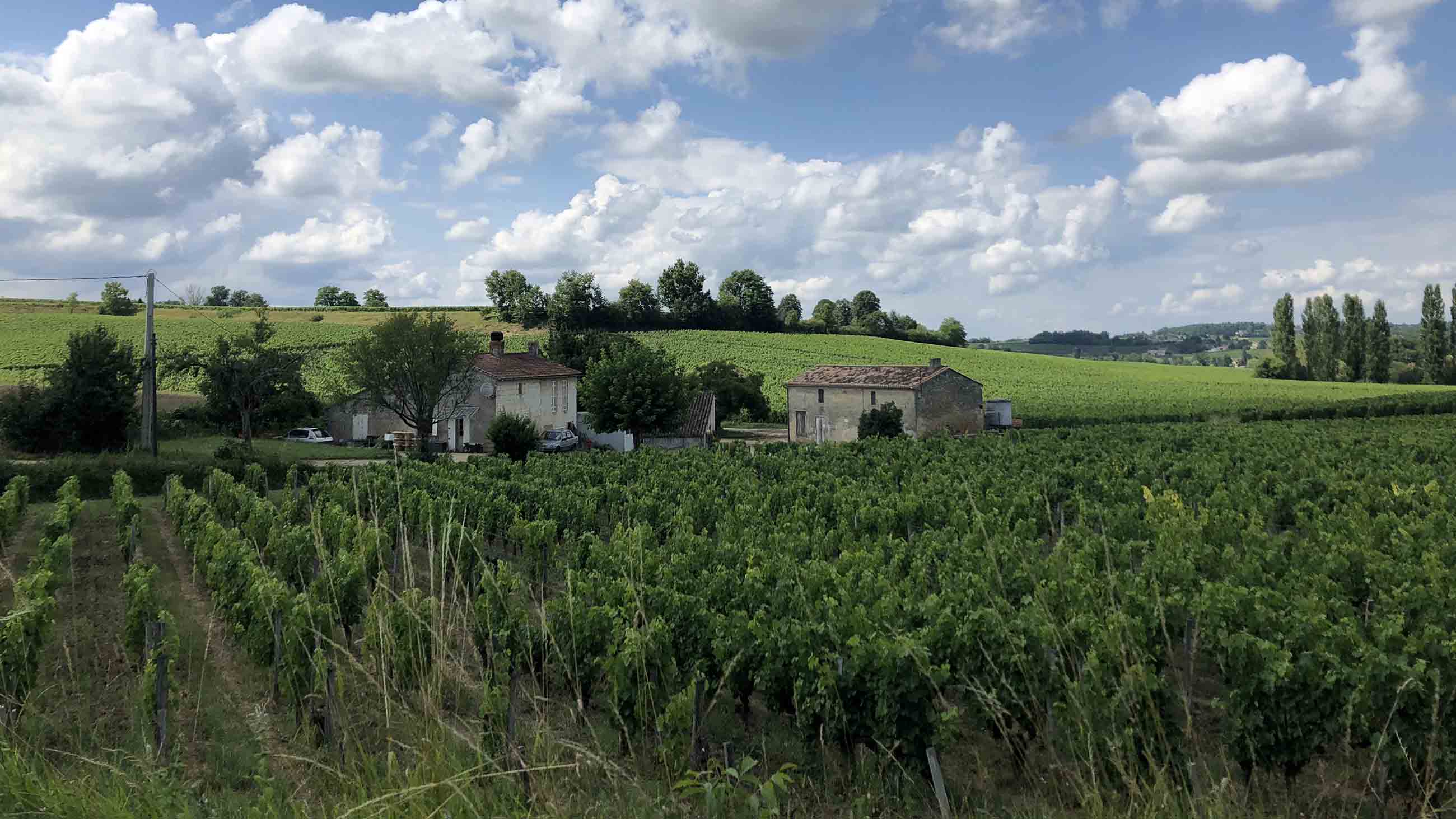
Complicating matters further is the fact that French wines are very tightly regulated, with laws dictating, among many other things, which wine grape varieties producers can use and how much wine specific vineyards can produce. Including different grape varieties in Bordeaux wines will require changing these regulations, meaning climate change is running up against not just tradition, but legal structures — all of which will need rethinking sometime soon.
Still, the transition away from what’s worked for centuries is likely to take time, and just what traits Bordeaux winemakers might exploit from heirloom varieties like albariño, mencía, nero d’Avola, or xinomavro remains far from clear. In regions like David-Beaulieu’s Bordeaux, where merlot grapes currently make up more than 60 percent of red wine vineyards, it’s a billion-dollar-question that winemakers — and wine lovers — are only now beginning to contemplate.
“Not in 10, but maybe in 50 years,” David-Beaulieu predicted, perhaps optimistically, “Merlot could disappear from Bordeaux.”
Amid a galaxy of obscure wine grapes that could potentially make great wine in a climatically warmer Bordeaux region, Kees van Leeuwen has made it his mission to find the stars. Van Leeuwen, a professor of viticulture at the University of Bordeaux’s Institute of Vine and Wine Science and Bordeaux Sciences Agro, has planted a living database of 52 wine grape varieties on a plot in the suburbs of Bordeaux. Since 2012, he and his team have meticulously analyzed these varieties in the hopes of identifying those that will flourish in a warmer climate — and still make good Bordeaux wine. “We’re looking for new varieties to adapt to new temperatures,” he said.
In three years, van Leeuwen estimates, he’ll have five varieties ready for large winemakers to experiment with. After another 10 years, those varieties will be ready for large-scale production, van Leeuwen predicts. Then, of course, there’s lobbying the French authorities to change the laws to allow a new wine grape variety into a Bordeaux wine. That’s not impossible, he says, but it will require most of the famous labels, or châteaux, to impress upon regulators the immediacy of climate change and its threat to Bordeaux wine — something that’s hard to picture happening anytime soon, given that many producers have yet to be convinced that change will soon be needed.
As it stands, van Leeuwen is not persuaded that growers will be quick to adapt. After all, the enologists — or wine scientists — employed to bring the best science to bear on wine production have other priorities, he explains. “Most enologists are very busy making the best possible wine in the current vintage and do not necessarily have a very long-term perspective,” van Leeuwen said. “But it’s a disaster if you don’t adapt.”
And yet, some winemakers remain downright cavalier about the changing climate.
“For us, climate change is good,” says Yannick Reyrel, technical director of Château de Pressac, a producer with nearly 100 acres of vineyards in Saint Emilion. “We can make wine that’s riper, with softer tannins and more velvety than we could years ago.”
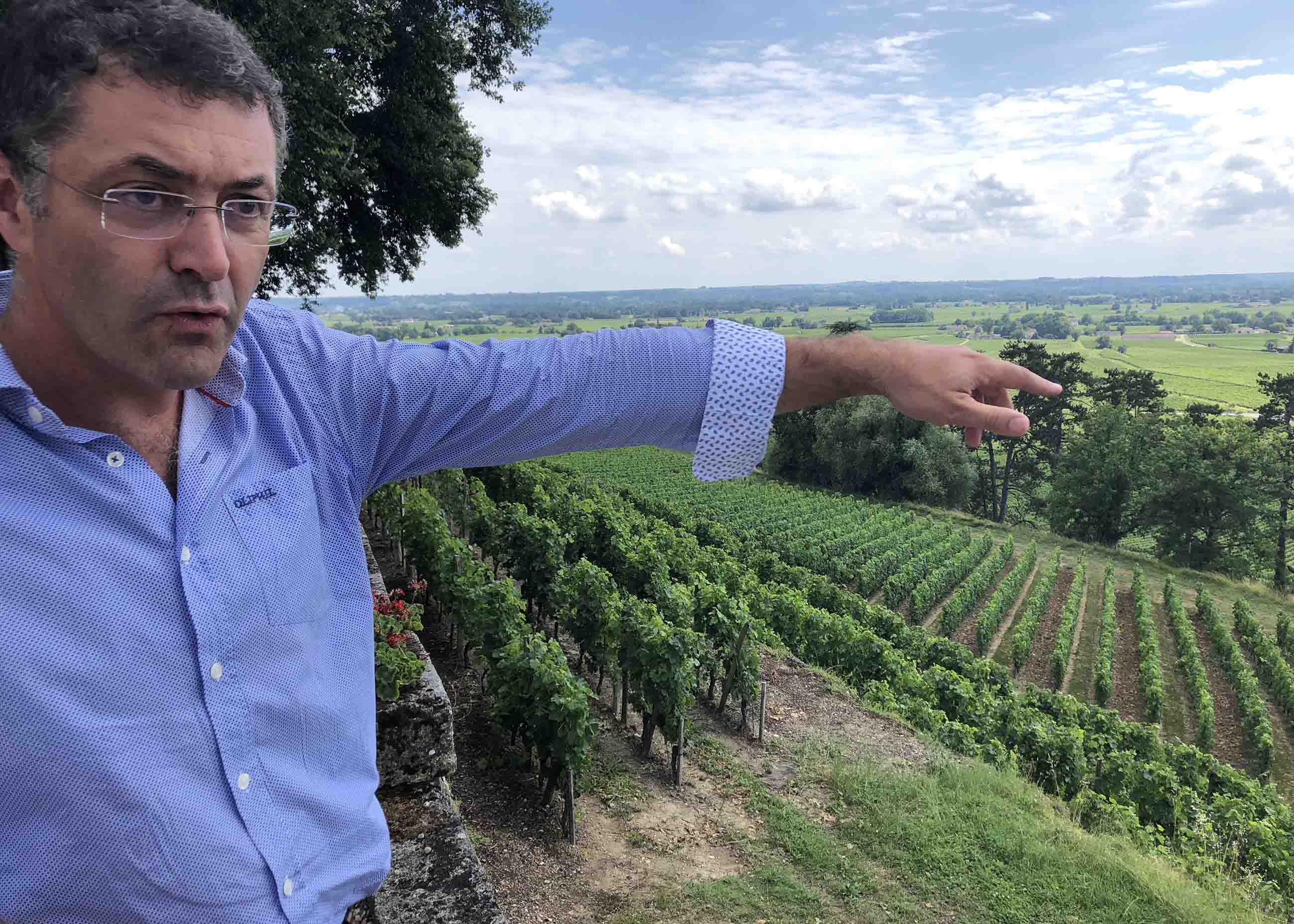
It’s true that the drier climate has produced more exceptional vintages than normal. “Among the 20 driest vintages in 61 years, 10 occurred in the period 2000–2012,” wrote van Leeuwen and a colleague in a 2016 study in the Journal of Wine Economics. “In Bordeaux, all dry years are good or great vintages,” they wrote.
But this celebration may be short-lived, the researchers added. “Harvest is taking place earlier in the season as a result of increased temperatures. … However, when ripeness is reached too early … grape composition is unbalanced and wine quality is jeopardized.”
Thanks to Bordeaux’s warmer summers, Reyrel says he has seen Château de Pressac’s wines improve in recent years, but he concedes that eventually he’ll have to adapt. His short-term solution: blending more cabernet sauvignon and cabernet franc into the wine. But with 75 percent of his vineyards planted with merlot, his production volume is sure to be squeezed the warmer it gets.
Thomas Gomes, meanwhile, isn’t waiting around for the laws to change to get a jump on the climate. The 33-year-old winemaker, who farms five acres under the name Domaine Populus Alba, has already planted grenache and syrah — wine grapes that are prohibited from being used in a Bordeaux wine. When I sat down with him and his girlfriend in July, he told me that while the rain was ruining his grenache, his syrah was on track to make him another vintage of “colorful wine, very spicy and very fruity.” (He plans on trying out carignan, nero d’Avola and tempranillo soon.)
Syrah may not be the answer to Bordeaux’s climate woes, says Gomes, but someone has to start experimenting with new varieties. He’s personally inspired by the more heat tolerant varieties found in France’s southern Rhône Valley. Warmer and drier than Bordeaux, it’s a good proxy for where Bordeaux is likely headed, and Gomes is betting he can learn a lot from those how those grapes grow, when they need to be harvested, and what kind of wine they ultimately make. “As the climate gets hotter, I think for Bordeaux these varieties will mature better because they’ll be less stressed,” he said. “We can adapt to these varieties. The wine will be better with these grapes. I am sure.”
That sort of flexibility will be key to the survival — and evolution — of France’s most famous wines, and it’s something that David-Beaulieu of Château Coutet recognizes readily.
Back at his fermentation room, he pointed out his 100-year-old wooden wine press with its weathered staves, gears, and belts. “That press works perfectly,” he declared, suggesting that winemaking is at least as much craft — even art — as it is science. After all, David-Beaulieu noted, even though he contracts with a laboratory to test the chemical composition of his grapes around harvest, it is he alone who determines exactly what time to harvest.
Sooner or later, making those kinds of decisions with the planet’s shifting climate in mind — and adapting creatively — will become obligatory for any winemaker in Bordeaux who wants to continue in the business.
That’s something Gomes has taken to heart as well — though because he’s making use of those rogue grapes, he cannot label his Bordeaux-made wine as “Bordeaux AOC,” the high-end, official classification reserved for wines that adhere to Bordeaux’s most strict controls. At best, he can simply call it a “Vin de France.”
But Gomes doesn’t see that as a slap in the face so much as a badge of honor.
“The large, famous châteaux will benefit from the experimentation of the small producers,” he said. “It’s always the little winegrowers that will push innovation.”
Aleszu Bajak is a freelance science journalist and graduate programs manager at Northeastern University’s School of Journalism, where he teaches courses and runs research on digital journalism, data reporting, and new media. His writing has appeared in The Washington Post, M.I.T. Technology Review and Nature.


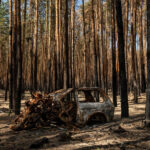




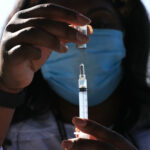

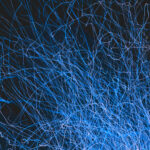
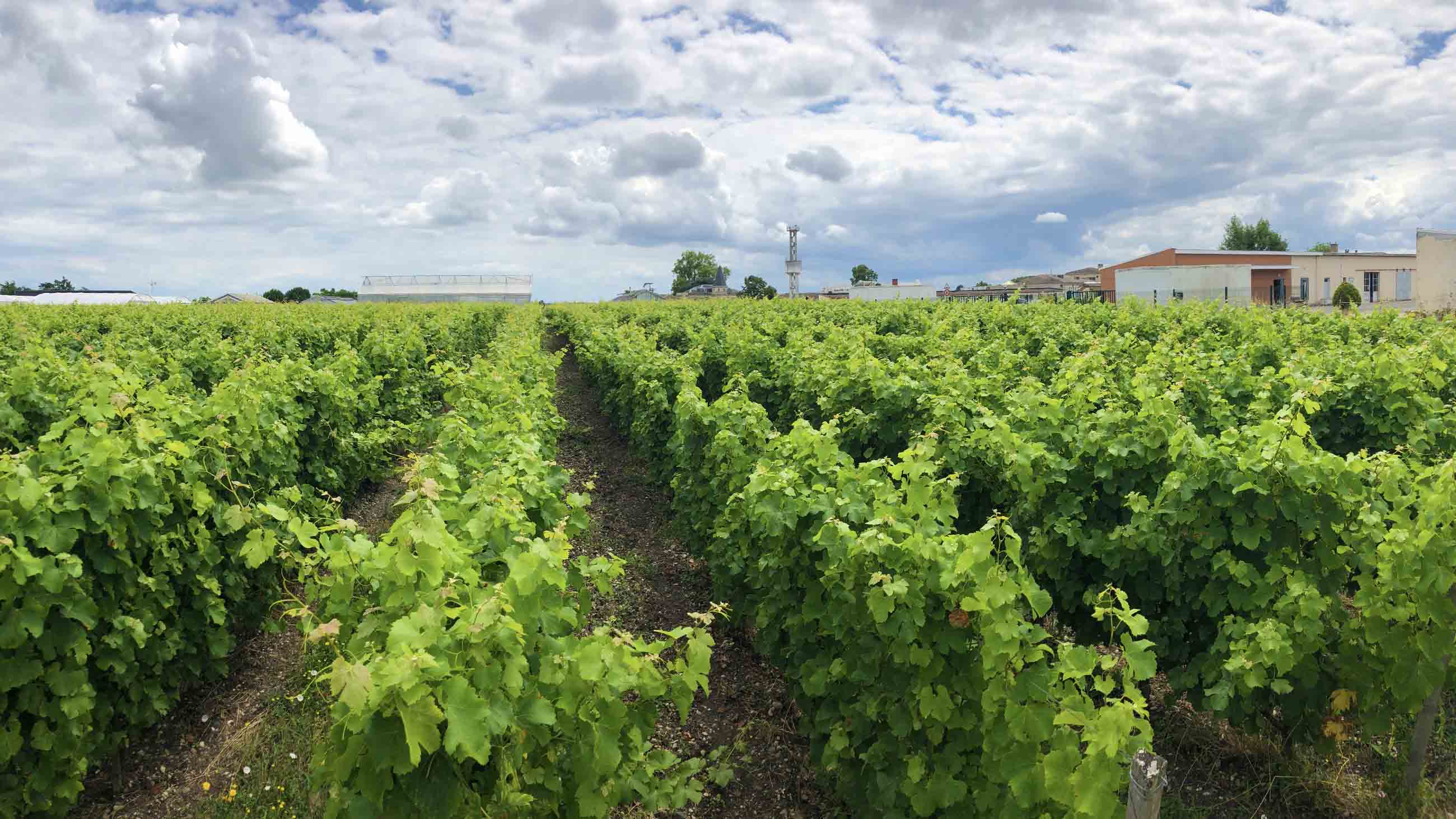
Comments are automatically closed one year after article publication. Archived comments are below.
Thank you so much to Prof. J.V.Yakhmi for this dancing Ode to the Village Quinsac, Capital of Clairet, this one night light red wine !
The river Garonne deviates a bit in the vicinity of the village Quinsac. There is a lovely island in the middle of Garonne. Quinsac is known to make a clear wine, the Clairet, which is exclusive to Quinsac. I wrote a poem in appreciation of the Clairet, the village Quinsac – and its culture, music and its ways of life. The original poem was in Hindi, which I translated into English (some poetic nuances get diluted while translating it), and it was further translated together by Prof. Corinne Dejous, my colleague from Bordeaux University and Mr. Lionel, the Mayor of the village Quinsac. It is:
An Ode to Clairet and to the Village Quinsac
Original poem by J.V. Yakhmi, Written in Sept. 2016.
(French translation by Corinne and Lionel, is available)
I fell in love with your magic,
It is you who attracted me, Quinsac.
The Nature, as evident is present here, like a bride,
She is beautiful and is dressed in her best attire.
To catch her view, even the Garonne deviates,
With all things organised here, order estabished.
I fell in love with your magic,
It is you who attracted me Quinsac.
And we appreciate you Clairet,
“Made in Quinsac”, you are cherished.
Mother Nature declared here that,
This small village be blessed by Gods,
A fragrance sprinkles in my dreams,
And all this gets me back, as soon as I leave it.
I fell in love with your magic,
It is you who attracted me Quinsac.
Your tall trees undulating, full of life,
The river spreading its refreshing air,
The fields are filled with rows of vine,
And your pathways all make a fairyland.
I fell in love with your magic,
It is you who attracted me Quinsac.
At the end of each alley is a ‘chateau’ here,
Where is born this red and clear magic,
Neither Bordeaux, nor rose, can so blossom,
Under the sunshine or under raindrops.
And we appreciate you Clairet,
“Made in Quinsac”, you are cherished.
The fountain Jean cries, and Jean laughs,
All the euphorea of Clairet flows from it,
Simple and pure souls dazzle here.
Clairet! your magic in their spirits.
I fell in love with your magic,
It is you who attracted me Quinsac.
With music at the Church square
Their hearts, with passion, full of life,
Quinsacais – with pulsating feet
Light intoxication makes you dance enviously
And we appreciate you Clairet,
“Made in Quinsac”, you are cherished.
I fell in love with your ‘clear’-ness,
It was you who attracted me, Quinsac!
It will be indeed sad for the wine-lovers of Bordeaux wines if the ambient climatic conditions in the countryside around Bordeaux become any warmer than the present. Wine-makers of Bordeaux region, who gave the classic wines, including the red wine, to the rest of the world are not only good farmers who have mastered the techniques of producing the best quality grapes but also how to ripen them under the best conditions, which they alone know in detail and are emotionally proud of it. It is more an art than business for them to make wine, store it in oakwood barrels to age them under optimum conditions of temperature and moisture, to get that unique aroma and taste, characteristic of Bordeaux wines.
One has to see the enthusiasm and care that is given to vineyards, running into kilometers in the countryside of the Bordeaux region. You have to live their at least for a few weeks and go around the countryside to see for yourself how much importance is given to the terroir — the harmonic mix of plant, soil, geology, and climate which help the grapes to grow and ripen just at the rate that is required in a subtle manner. I have been lucky to have visited the villages and vineyards and wine factories (Chateaus) in and around Bordeaux, such as, St. Emilion, Libourne, Les Billaux and Quinsac, etc.. St. Emilion, a small village has rows of wine-shops selling exotic brands. A visit to a wine-factory offers one a great welcome and hospitality and tasting of wines, all of which together is legendary.
Long rows of vines have a skirting of rose-plants, grown intentionally because harmful insects, which first attack rose-petals, would sound a warning to the farmer to take a remedial action before the grape-harvest gets affected. As a frequent visitor to Bordeaux, I have also lived in this countryside and savored the whole ambience of the vineyards that wins you over. You have the river Garonne flowing by, the small hills rising and rows of grape plants making up the vineyards. Heavenly. I hope this heaven, the dream never shatters.
The optimism of winemakers to “outsmart” weather patterns is admirable, but hopelessly misplaced. The answer is not to produce a different grape, the answer is close up shop. A world and people that self-destructs its, weather, land and ecosystem is not worthy to drink authentic Bordeaux wine.